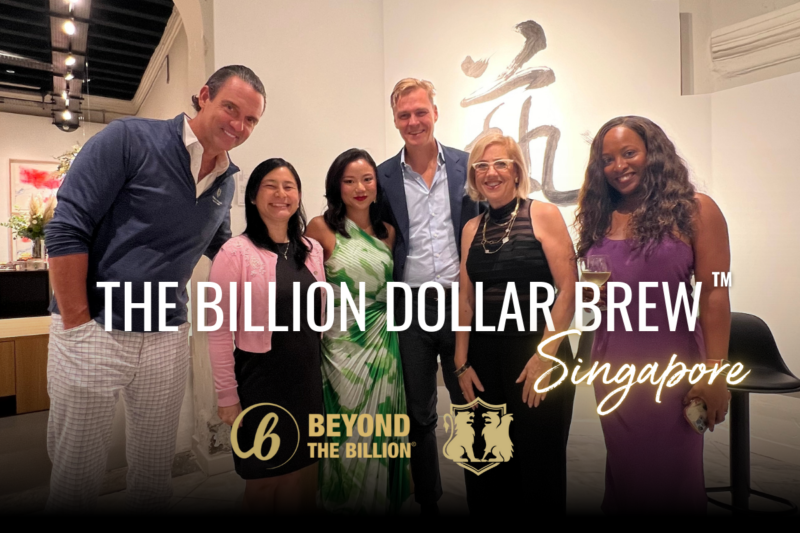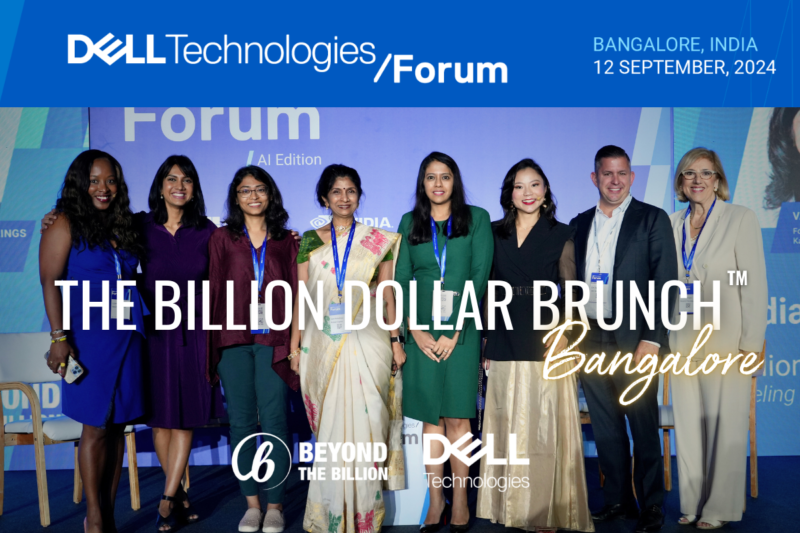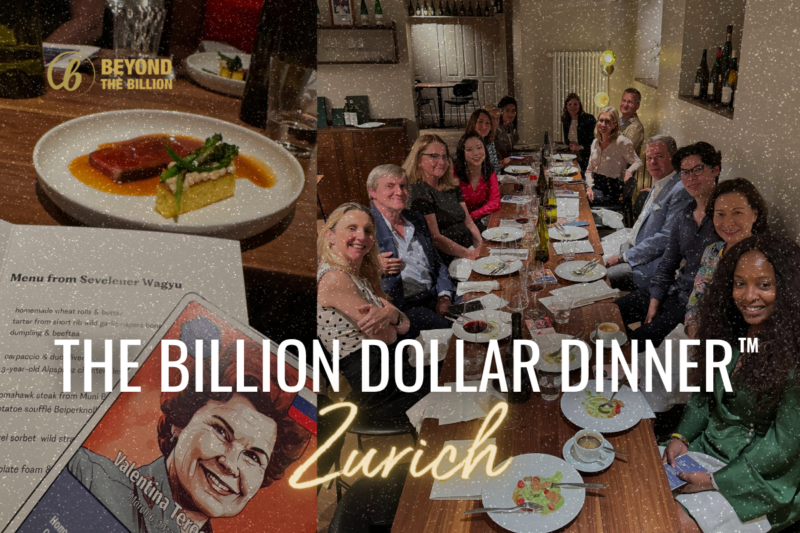By: Karina Chan, July 5th 2019, On Medium
Venture Capital funding has gotten much flack for investing its dollars by pattern matching, thus resulting in a predominantly white, male, tech pool of entrepreneurs with access to capital. Female founders only got 2.2% of the VC dollar pie in all of 2018.
But what about the VC partners themselves? Some attribute the lack of funding to diverse founders due to the fact that partners themselves lack diversity. So what drives that?
The Billion Dollar Fund’s July feature takes a deeper dive into the world that most of us VC-money-dreaming folks never get to interface with… but really should take the time to understand. I had the privilege of speaking with Leslie Jump, CEO, and co-founder of DifferentFunds, a platform that makes it easy to find, evaluate, due diligence, and invest in venture funds.
Jump has experience building, advising and investing in new companies, products, and brands, in the US and across the globe. She’s held executive roles at Fortune 500 and emerging growth companies as well as leading nonprofit organizations, with operational responsibilities in diverse markets worldwide. She started DifferentFunds to garner a better look at the landscape of venture capital. DifferentFunds tracks nearly 1,000 venture firms in the United States over a number of factors: the education of these managers, their investment styles, theses, their track-record etc. to better educate and provide data to institutional or individual investors looking to put their money in an emerging manager.
The short answer is: It’s for people who don’t want to just go fishing in the same Sand Hill Road pool.
LJ: Ultimately at the end of the day, we think that we can help venture capital expand from being this boutique service business, which fundamentally has operated the same way it has since the Eisenhower administration, and grow into an asset class. The only way to do that is more volume and velocity. That’s why we built ourselves as a platform as opposed to a services firm and that’s why we’re taking a broad approach to help analyze funds and the opportunities for those funds. The short answer is: It’s for people who don’t want to just go fishing in the same Sand Hill Road pool.
1. There are the Kleiner Perkinses, the Sequoia Capitals etc. but the vast majority of venture firms are actually much much smaller.
LJ: There are very few firms who DON’T fall in the category of “emerging managers” — meaning there are VERY few large, established funds that are led by women. Even though there exist funds led by investors like Aileen Lee (from Cowboy Ventures), there are other bigger funds that only have women partners. There’s Mary Meeker, but she’s a total outlier for a variety of reasons. So, they’re newer funds and smaller funds. In 2018 the median fund size in the United States was about $59M dollars.
There’s this artificial limit, or maybe you could even express it as a floor, that institutional investors will look at when they consider investing in a product. Its usually $100M, and they won’t look at anything smaller. Increasingly its as high as $200M. So you see the immediate math problem. There’s a lot of funds and they’re doing great things but they’re small and excluded from a vast majority of their own investment capital. I would say that the problem is similar to female entrepreneurs looking for VC funding. It’s easier if you’re an established entrepreneur, a repeat entrepreneur who has had a billion-dollar success behind you. If you’re not established and you’re newer, it’s the same thing whether or not you’re a fund manager or an entrepreneur. It’s harder for women for all the reasons The Billion Dollar Fund talks about in their work.
2. Female GPs, like female entrepreneurs, also prepare ways to build the connections necessary to bridge the investment gap left by exclusive, male-dominant network effects.
LJ: The first thing that a lot of new fund managers don’t really understand is: “How do we structure our fundraising efforts? What kind of investors should I be targeting based on what kinds of funds they have what size they are and what level of experience they have etc. etc.” Then they don’t know how to go about meeting them. I was talking to someone earlier today. She’s got a good track record but she’s now spinning out on her own. And she said, “I don’t know family offices. I just don’t know that many.” That’s not that uncommon. It’s about identifying who are the target investors and then identifying a way to meet them. For better or worse this is still very much a relationship business.
The difference between a VC in Fund I going to fundraise and a startup trying to fundraise is that there are millions of potential investors for that entrepreneur, but there are only thousands of potential investors for that VC. The VC has got to hit it right.
3. Currently, VC managers are funded through obscure, pattern-matching tactics.
LJ: One of the things we say a lot about the way Limited Partners (LPs) look at General Partners(GPs) is that in this industry, pattern matching masquerades as business intelligence. They’ll pattern match through a couple of key patterns rather than data to really identify who it is that they want to invest in. And typically the patterns consist of some of the following: What firm did you spin out of? Were you at Kleiner Perkins or Sequoia Capital? What Ivy League college did you go to? And, this one drives me nuts, what sports were you in? I hear that used as a justification: “This person is really competitive, she was on the tennis team at Harvard”. These may be interesting factors but they’re hardly predictive. It’s what the industry has relied on because it is small.
The entire VC industry raised $54B in 2018. Last year total assets under management for the top 5000 institutions for the top 5 million households were over $34T dollars. Venture Capital is a teeny tiny boutique business on Wall Street and that’s why it’s been run as a relationship business as opposed to a quantified, data-driven business.
4. The future of investing in emerging managers will be more quantified — using data to analyze the experience and relevant knowledge of the investor.
LJ: We started the Artemis Project to find what women-led VC firms were out there. We found over a hundred women-led firms in the US and we thought wow that’s great. And then we thought that’s too many to due diligence! We need to have another way to analyze them. So we created a model which has 30 different factors to evaluate and score funds according to what we like to call potentials for success as opposed to past pedigree.
What’s the prior investing history? Did they work in a venture firm or on Wall Street or did they invest their own money as an angel investor? How did it go? What other kinds of experience do they have? A lot of the GPs we work with don’t come from financial services backgrounds. We want to understand where they were before this and how it is relevant to their investment theme.
We look at the market overall. If you say you’re investing in Robotics-as-a-Service we try to validate through a 3rd party that there is a big enough market there for you to invest in it successfully. We look at marketing. Today capital is a commodity and the best entrepreneurs have access to a lot of investors. How are they going to break through the clutter in this industry? How competitive are they in this deal sourcing? How do they source deals? How do they think about their own selection process? We put together these 30 different factors and use it as a scoring model. It’s not perfect by any stretch of the imagination but this is a baseline and one we want to evolve over time.
The next big project we’re working on is frontier technologies — hard-science, breakthrough tech investing like AI and drones and robotics, and cybersecurity. We’ll add factors specific to those categories for that. There are different kinds of entrepreneurs required for those kinds of businesses
5. The next generation of VCs is diverse and different from the ones that currently dominate the industry.
LJ: What our DifferentFunds report shows is that emerging women managers have more diverse educational backgrounds than established managers. We used the women of the 2018 Forbes Midas List to be the bellwether.. A vast majority of these women, these emerging managers, went to private liberal arts schools. Interestingly, many solo GPs and sole proprietors standing up their first funds went to public universities, and there are far fewer that are tech or Computer Science graduates. This may be conjecture, but if you’re starting a new entrepreneurial venture you’ve got to have hustle and it’s kind of interesting how that aligns with women who went to public universities. They have to work a lot harder to get in the room. Their existing networks probably aren’t private equity leaders or venture capital endowment managers.
The other thing that’s interesting is that they really know their markets. I was speaking to a woman earlier today who is doing some really interesting work with multicultural consumers. Her thesis is that there are new products being built to serve these markets which had been historically underserved. It’s a classic thesis in a way. It’s what everybody used with emerging geographic markets 10–20 years ago. But now, and I think she coined it this way, emerging consumers are new emerging markets. She’s right. Our country will be totally multicultural by 2045. That means there will be multicultural services needed to serve those segments. These GPs will see that in a way that maybe someone who went to Harvard and rowed crew might not get. No offense to Harvard, but I like to pick on them.
About DifferentFunds, Inc.
Different is the first platform designed and built for investing in venture funds. Different combines a deep understanding of the venture ecosystem with institutional-grade research and due diligence. Our network spans 100+ markets, in the US and internationally. We source from more than 960 venture firms. Our funds have tremendous variety, investing in 30+ sectors and with over 50% GP diversity. Our team blends expertise in venture, technology, and financial services.
Learn more at www.differentfunds.com.
About Beyond The Billion
Beyond The Billion™(BTB), from the Founders of The Billion Dollar Fund for Women™ was founded to address the gender venture investment gap where women-founded teams receive less than 3% of total VC funding. In less than a year, BTB mobilized a global consortium of over 80 venture funds committed to investing $1Bn in women-founded companies. BTB’s mission is now to catalyze the larger landscape of capital, ensuring the continued capacity to invest in women-founded companies by bridging venture funds and limited partner investors. These include institutional investors such as endowments, foundations, international financial institutions, and development financial institutions; as well as strategic corporates, family offices, wealth managers, and high net worth individuals to drive the agenda and capital, collectively.
Have a success story you’d like to share?
Contact us on sarah@beyondthebillion.com.
More information: www.beyondthebillion.com
About the Author: Karina Chan
Karina is the author of “Women in Venture Capital: How to Break into the Boys Club of Venture Capital: Lessons Learned from the Best of the Best” in which she illustrates how to pursue a career in an exclusive industry through the stories of a dozen female partners and managing directors. She is passionate about shortening the gender investment gap in both representation of female partners in venture capital as well as dollars invested in female founders.








